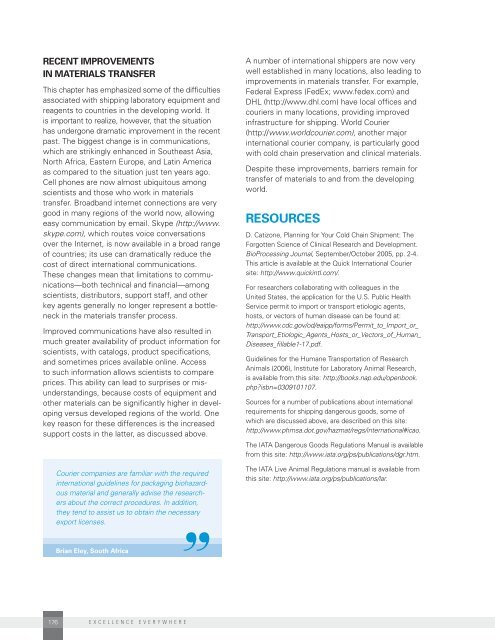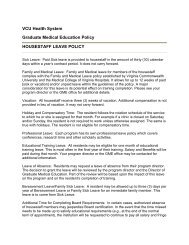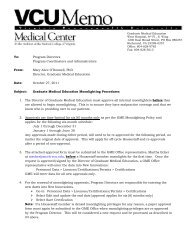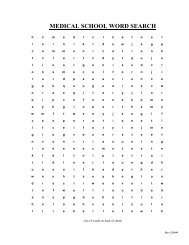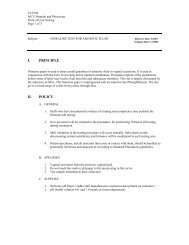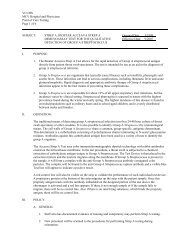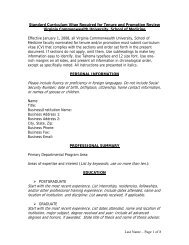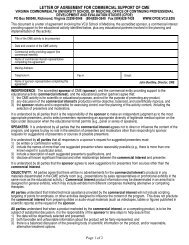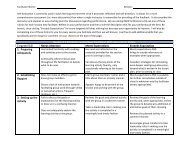Excellence Everywhere - National University of Ireland, Galway
Excellence Everywhere - National University of Ireland, Galway
Excellence Everywhere - National University of Ireland, Galway
- No tags were found...
You also want an ePaper? Increase the reach of your titles
YUMPU automatically turns print PDFs into web optimized ePapers that Google loves.
Recent Improvementsin Materials TransferThis chapter has emphasized some <strong>of</strong> the difficultiesassociated with shipping laboratory equipment andreagents to countries in the developing world. Itis important to realize, however, that the situationhas undergone dramatic improvement in the recentpast. The biggest change is in communications,which are strikingly enhanced in Southeast Asia,North Africa, Eastern Europe, and Latin Americaas compared to the situation just ten years ago.Cell phones are now almost ubiquitous amongscientists and those who work in materialstransfer. Broadband internet connections are verygood in many regions <strong>of</strong> the world now, allowingeasy communication by email. Skype (http://www.skype.com), which routes voice conversationsover the Internet, is now available in a broad range<strong>of</strong> countries; its use can dramatically reduce thecost <strong>of</strong> direct international communications.These changes mean that limitations to communications—bothtechnical and financial—amongscientists, distributors, support staff, and otherkey agents generally no longer represent a bottleneckin the materials transfer process.Improved communications have also resulted inmuch greater availability <strong>of</strong> product information forscientists, with catalogs, product specifications,and sometimes prices available online. Accessto such information allows scientists to compareprices. This ability can lead to surprises or misunderstandings,because costs <strong>of</strong> equipment andother materials can be significantly higher in developingversus developed regions <strong>of</strong> the world. Onekey reason for these differences is the increasedsupport costs in the latter, as discussed above.Courier companies are familiar with the requiredinternational guidelines for packaging biohazardousmaterial and generally advise the researchersabout the correct procedures. In addition,they tend to assist us to obtain the necessaryexport licenses.”Brian Eley, South AfricaA number <strong>of</strong> international shippers are now verywell established in many locations, also leading toimprovements in materials transfer. For example,Federal Express (FedEx; www.fedex.com) andDHL (http://www.dhl.com) have local <strong>of</strong>fices andcouriers in many locations, providing improvedinfrastructure for shipping. World Courier(http://www.worldcourier.com), another majorinternational courier company, is particularly goodwith cold chain preservation and clinical materials.Despite these improvements, barriers remain fortransfer <strong>of</strong> materials to and from the developingworld.RESOURCESD. Catizone, Planning for Your Cold Chain Shipment: TheForgotten Science <strong>of</strong> Clinical Research and Development.BioProcessing Journal, September/October 2005, pp. 2-4.This article is available at the Quick International Couriersite: http://www.quickintl.com/.For researchers collaborating with colleagues in theUnited States, the application for the U.S. Public HealthService permit to import or transport etiologic agents,hosts, or vectors <strong>of</strong> human disease can be found at:http://www.cdc.gov/od/eaipp/forms/Permit_to_Import_or_Transport_Etiologic_Agents_Hosts_or_Vectors_<strong>of</strong>_Human_Diseases_fillable1-17.pdf.Guidelines for the Humane Transportation <strong>of</strong> ResearchAnimals (2006), Institute for Laboratory Animal Research,is available from this site: http://books.nap.edu/openbook.php?isbn=0309101107.Sources for a number <strong>of</strong> publications about internationalrequirements for shipping dangerous goods, some <strong>of</strong>which are discussed above, are described on this site:http://www.phmsa.dot.gov/hazmat/regs/international#icao.The IATA Dangerous Goods Regulations Manual is availablefrom this site: http://www.iata.org/ps/publications/dgr.htm.The IATA Live Animal Regulations manual is available fromthis site: http://www.iata.org/ps/publications/lar.176 excellence everywhere


